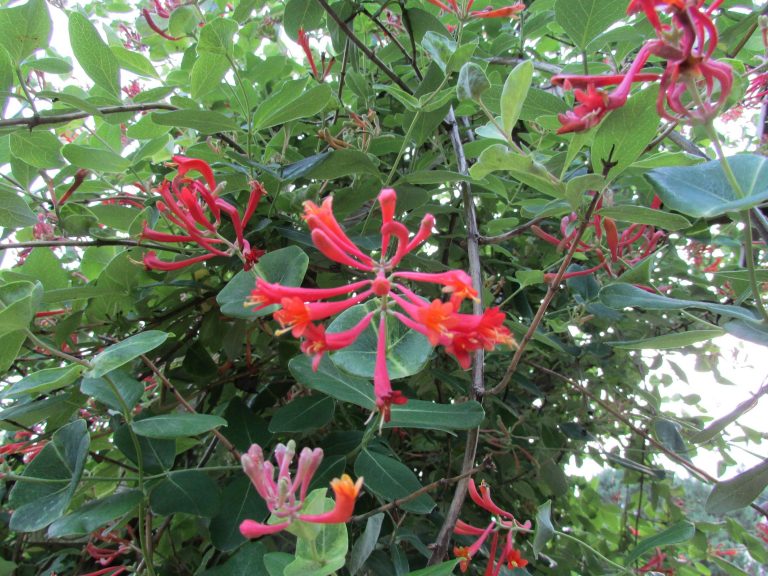Vines can be a tricky ordeal in the garden, either too aggressive or too weak to bother with. By choosing our native coral honeysuckle, you will have achieved the goldilocks of the vine world–just right! This is an attractive, long-blooming plant that adds height to the garden and provides food for hummingbirds, bees, and other insects.
Growing 10 to 15 feet tall, this woody twining vine is gorgeous covering an arbor or fence. It requires little room at ground level as its beauty is displayed by growing it upwards, preferably in full sun for best flowering, although it will tolerate partial shade.
It is an absolute showstopper in May, completely covered in red tubular flowers, signaling that it is a favorite of hummingbirds. Flowering will continue straight through until at least September, although not as prolifically. Should you need to prune it, do so after its May bloom bonanza so that you don’t compromise its buds. The reddish-orange flowers feed not only hummingbirds, but bees and other pollinators as well. It is the host plant for caterpillars of the iridescent spring azure butterfly and for clearwing moths. In late summer to fall it produces berries, however, these won’t persist for long as birds quickly devour them.
Other names for coral honeysuckle are trumpet honeysuckle and scarlet honeysuckle. Common names can be confusing, so you want to be sure you are purchasing Lonicera sempervirens, as there is also a native trumpet vine (Campsis radicans) which is rather ferocious and needs a very strong support because it can damage structures and can reseed in an annoying manner. Also, don’t confuse coral honeysuckle with the invasive Japanese honeysuckle (Lonicera
japonica), enjoyed for its wonderfully fragrant yellow and white flowers but whose sale is banned in New Jersey and several other states due to its propensity for invading many areas and entangling and killing any vegetation it covers.
The leaves of coral honeysuckle persist well into winter, as indicated by its species name sempervirens, meaning evergreen. Although it is not evergreen in our area, its leaves will remain on the vine much later than those of other deciduous plants. In fact, during years when winter gets a late start, this vine will still be blooming in November! It is not fussy about soils, growing in somewhat sandy to clay soils and in average moisture, while tolerating drought. Give this native some room in your garden and you will be rewarded with an entire summer of blooms and hummingbirds while requiring little maintenance.
For more information on coral honeysuckle, click here and visit Native Plant Channel on YouTube and Facebook for more information on native plants.


